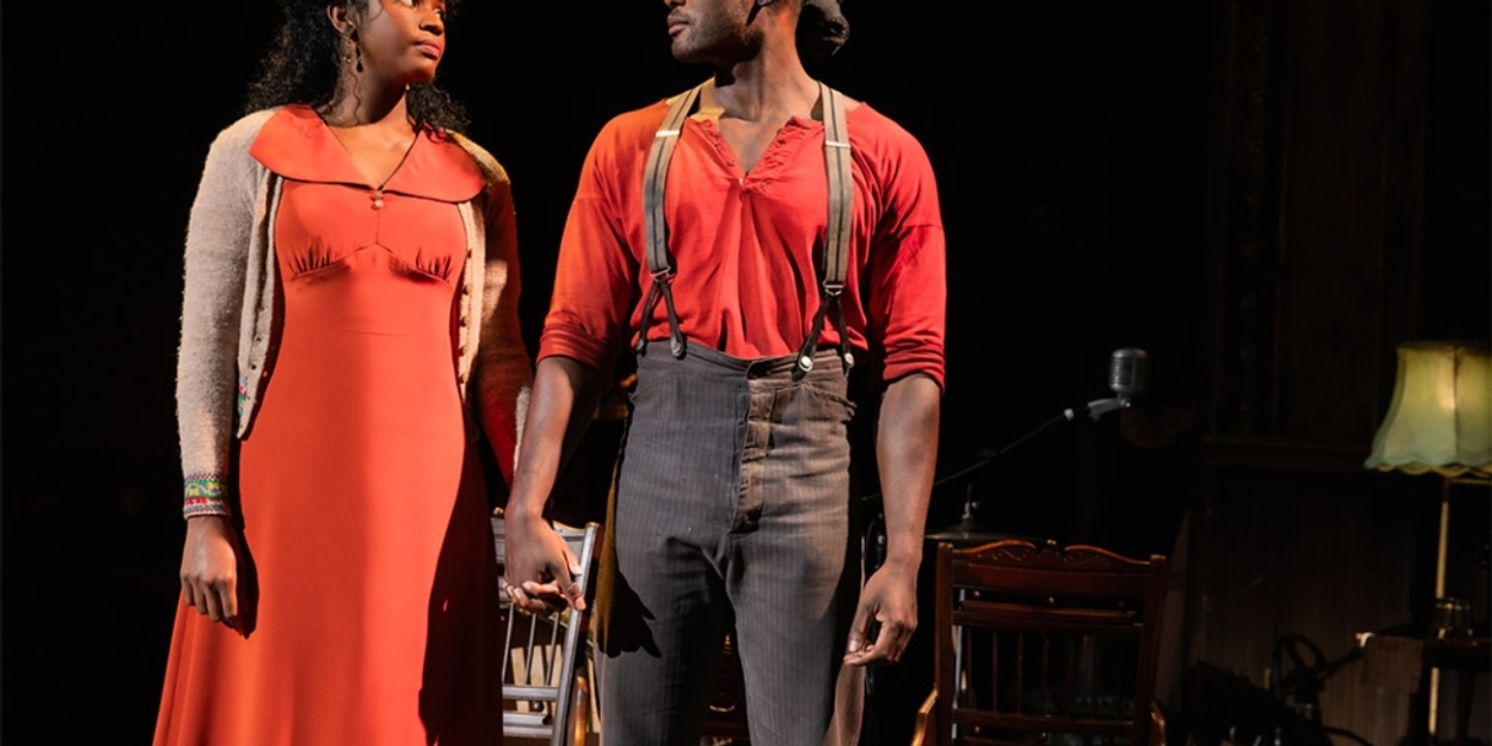Review: GIRL FROM THE NORTH COUNTRY At The Kennedy Center
Through December 31 at the Eisenhower Theater

The national tour of "Girl From the North Country," writer-director Conor McPherson's Broadway musical based on the songs of Bob Dylan, has arrived at the Kennedy Center. It features characters confronting racial prejudice, lovers in varying degrees of satisfaction with each other, apocalyptic religious imagery, and dreamers running up against reality. In short, watching it is very much like listening to a Bob Dylan album.
"North Country" takes place over a few days in a boardinghouse in Duluth, Minnesota in November of 1934. (Dylan was born in Duluth in 1941 and spent his formative years in nearby Hibbing.) Plays set in boardinghouses, hotels, and similar environs are often fertile grounds for drama as they provide opportunities for people from different walks of life to intersect, and that is certainly the case here. The house's proprietor, Nick Laine (John Schiappa) lives at the house and is staving off bankruptcy as he cares for his mentally-diminished wife, Elizabeth (Jennifer Blood, played by Kelly McCormick in the performance I attended.) Nick is devoted to Elizabeth, but has more than a friendly interest in Mrs. Nielsen, a tenant who offers to help with his financial troubles after receiving her late husband's inheritance. Laine is the adoptive father of Marianne (Sharae Moultrie, played by Rayla Garske in the performance I attended) a nineteen year-old pregnant black girl who was abandoned at the house years before, and the biological father of Gene (Ben Biggers) a frustrated writer and alcoholic in his early twenties whom Nick encourages to take a job with the railroads. Nick hopes to arrange a marriage between Marianne and Mr. Perry, a shoe manufacturer who is candid about not being able to offer her years of devoted love, but financial security. Gene, meanwhile, is distraught over the departure of his sometime love Kate Draper (Chiara Trentalange.)
Two vagrants arrive at the boarding house, "Reverend" Marlowe, a Bible salesman who is incapable of speaking at lower than a shout, and Joe Scott (Matt Manuel, played by Warren Nolan, Jr. in the performance I attended.) a Black boxer who has escaped from an unjust prison sentence. Marianne is attracted to Scott, but wary of the risks of getting involved with him. Also staying at the house are Mr. and Mr.s Burke (David Benoit and Jill Van Velzer) and their developmentally-disabled son Elias (Aidan Wharton), a once-prosperous family who lost their fortune in the stock market crash of '29. The family physician, Dr. Walker (Alan Ariano) serves as the piece's narrator and encourages Nick to take better care of himself. Did you get all that?
In a traditional musical, the songs are often used to advance the plot. While there is some of that here, McPherson primarily uses compositions from various stages of Dylan's career to illustrate the physical and spiritual travails of his characters. Scott is clearly intended as a proxy for Rubin Carter, the boxer unjustly accused of murder and eventually exonnerated in the mid-1980s, the subject of Dylan's epic 8:33 protest song "Hurricane" from the album "Desire." Scott sings a mash-up of that song and the oft-covered Biblically-tinged "All Along the Watchtower" from 1967's "John Wesley Harding." The use of "Hurricane," about a specific incident that happened decades after when the play is set, may seem incongruous, but it drives home the fact that racial profiling and police misconduct are enduring problems, even in the present day. Scott and Marianne duet on the bizarre love/insult song "Idiot Wind" from 1975's "Blood on the Tracks" as they contemplate life together. Elizabeth, in a moment of lucidity, sings a haunting version of perhaps Dylan's most famous song, "Like a Rolling Stone," which is an apt description of herself and many other characters who are "on (their) own, like a complete unknown, with no direction home..." In one of the play's rare moments of levity, a hootenanny-style dance is held to "You Ain't Goin' Nowhere." Without revealing too much, "Forever Young" is used in a particularly touching, elegaic manner near the play's end.
As director, McPherson draws vivid characterizations from his cast and achieves a believable sense of community among his characters. The most ardent Dylan fans must concede that the man is more acclaimed for his lyricism than his vocals, and the performers offer interesting interpretations of the songs. As previously noted, at the performance I attended, several of the key roles were filled by understudies, who deserve great credit for rising admirably to the occasion. Rae Smith's costume and scenic design effectively recreate the time period.
"Girl from the North Country" is by turns melancholic and angry, but ultimately hopeful. It is occasionally difficult to keep track of the various storylines, but on the whole, we identify with the characters' struggles as they push through, to quote a Dylan song not used in the show, "this version of death we call life." Some Dylan purists might object, but then, they probably still haven't gotten over his switching to an electric guitar.
"Girl from the North County" runs approximately 2 hours and 15 minutes with one intermission.
Reader Reviews
Videos

